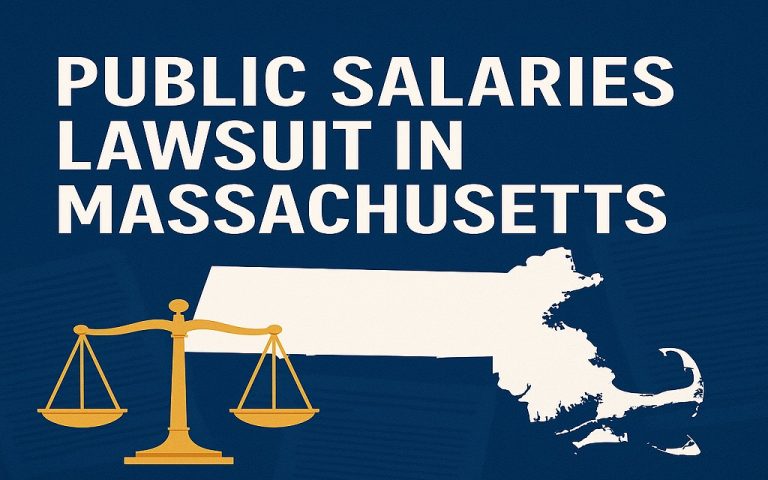If you’ve recently lost your job in California and believe it might have been unfair, you might be dealing with wrongful termination. Understanding your rights and the legal landscape can be complex, but this guide is here to help you navigate the situation confidently.
What is a Wrongful Termination?
Wrongful termination, also known as wrongful discharge or wrongful dismissal, happens when an employee is dismissed from their job in a manner that breaches their legal rights or contractual agreements. In California, wrongful termination can involve several scenarios, including breaches of public policy, violations of implied contracts, or instances of discrimination.
1: Understanding At-Will Employment and Its Limitations
California follows the “at-will” employment doctrine. This means that the employer or employee can generally end the employment relationship at any time, for any reason, or no reason at all, without prior notice. However, this principle has essential exceptions that offer protection to employees.
Public Policy Exception
The first exception is the public policy exception. Under this principle, you cannot be terminated for reasons that contravene established public policies. For example, if you were fired for reporting illegal activities (whistleblowing), refusing to participate in unlawful conduct, or taking time off to fulfill civic duties such as jury service, such a termination might be considered wrongful.
Implied Contract Exception
Another key exception is the implied contract exception. Even if you are an at-will employee, there might be an implied contract based on company policies, employee handbooks, or verbal promises made by your employer. For instance, if your employer assured you of job security or specified termination procedures in company documents or through verbal statements, firing you contrary to these assurances could constitute wrongful termination.
Covenant of Good Faith and Fair Dealing
The third important exception is the covenant of good faith and fair dealing. Although less frequently invoked, this principle suggests that terminations should not be conducted in bad faith or for malicious reasons. For example, if you were terminated to avoid paying earned bonuses or commissions, it might be considered a breach of this implied covenant.
2: Discrimination and Retaliation
California law prohibits termination based on discrimination or retaliation. Discrimination involves firing an employee based on protected aspects such as race, sex, color, national origin, sexual orientation, religion, age, or disability. For instance, if you were terminated because of your race or gender, this would be considered discriminatory and wrongful.
Retaliation happens when an employer fires a worker for exercising their legal rights. It includes participating in investigations, filing complaints about workplace issues, or asserting rights under employment laws. For example, if you were terminated shortly after filing a complaint about harassment or insecure working conditions, this could be considered retaliatory and wrongful.
3: Constructive Discharge
Constructive discharge refers to situations where an employer creates a work environment that is so aggressive or intolerable that you are forced to resign. In such cases, even though you technically quit, the resignation is considered a termination under the law because the employer’s actions effectively forced it. If you resign under these intolerable conditions, it may be viewed as a wrongful termination.
Examples of Wrongful Termination in California
Wrongful termination in California can take many forms, and understanding specific examples can help clarify what constitutes unlawful firing. Here are several scenarios illustrating wrongful termination:
1: Termination for Reporting Illegal Activities
One typical example of wrongful termination is when a worker is fired for reporting illegal activities within the company. For instance, if you discover that your employer is engaging in fraudulent financial practices or violating environmental regulations, and you report these issues to authorities or internal compliance officers, firing you as a result of this whistleblowing would be considered wrongful termination. California law protects employees from retaliation for exposing illegal conduct, ensuring that those who report misconduct are not penalized for their actions.
2: Discrimination-Based Termination
California law prohibits termination based on discrimination against protected attributes like gender, age, race, sexual orientation, religion, or disability. For example, if a female employee is terminated and it is clear that the decision was based on her gender rather than her job performance, this would constitute wrongful termination. Similarly, if an employee with a disability is dismissed after requesting reasonable accommodations, the termination might be discriminatory and unlawful.
3: Retaliation for Exercising Legal Rights
Employees have certain rights under the law, such as the right to take family leave under the Family and Medical Leave Act (FMLA) or to request accommodations for a disability. If you take protected leave or request reasonable accommodations and are subsequently fired, it might be retaliation. For instance, if you are dismissed shortly after taking medical leave or asking for adjustments due to a disability, this could be considered wrongful termination in retaliation for exercising your legal rights.
4: Constructive Dismissal
Constructive dismissal happens when an employer creates an unbearable work environment that forces an employee to resign. For example, suppose an employer repeatedly subjects an employee to harassment, unreasonable demands, or unsafe working conditions, and the employee feels compelled to resign due to these conditions. In that case, the resignation may be deemed a constructive discharge. Although the employee technically resigns, the situation is effectively terminated because the employer’s actions coerced the resignation.
5: Termination Based on National Origin
If an employee is terminated because of their national origin, this would be wrongful termination under California law. For instance, if an employee of Hispanic descent is let go after a new management team is brought in that prefers to hire individuals of a different ethnicity, this could be considered discrimination based on national origin. Such terminations are illegal and fall under the protections against discriminatory practices.
6: Termination After Making a Work-Related Complaint
If you make a legitimate complaint about workplace safety, harassment, or other work-related issues and are subsequently fired, this may be a wrongful termination. For example, suppose you report unsafe working conditions to a regulatory agency or complain about harassment by a coworker or supervisor and are terminated shortly afterward. In that case, this is a retaliatory discharge.
7: Breach of an Implied Contract
Even without a formal written contract, an employer might create an implied contract through company policies or practices. An implied contract may be broken; for instance, if an employee is fired without cause despite their employer assuring them, they will not be let go without reason. The company’s written policies or verbal assurances may create an expectation of job security that, if violated, leads to wrongful termination.
8: Termination of Political Beliefs
In California, it is illegal to terminate a worker based on their political beliefs or activities. For example, if an employee is involved in political advocacy or expresses political opinions and is dismissed as a result. It could be considered a wrongful termination. Employers cannot discriminate against employees for their political activities or affiliations.
9: Termination for Union Activity
California law protects employees who engage in union activities or organize for better working conditions. If an employee is terminated for participating in union activities, such as attending meetings or helping with union organizing efforts, this would constitute wrongful termination. Federal and state labor laws prohibit retaliation against employees for union involvement.
10: Termination Following a Workplace Injury
It could be considered retaliatory termination if you are terminated shortly after reporting a workplace injury or filing a workers’ compensation claim. California law saves employees from being fired for seeking compensation or medical treatment related to workplace injuries. It might be wrongful if your termination is linked to your injury or claim.
Understanding these examples can help you identify whether you might have been wrongfully terminated if any of these scenarios reflect your situation. Seeking legal counsel to discuss your options and potential remedies is advisable.
Steps to Take if You Believe You’ve Been Wrongfully Terminated
If you suspect you’ve been wrongfully terminated, you must take particular steps to protect your rights and seek justice.
1: Document Everything
First, documenting Everything is crucial. It includes keeping detailed records of your employment, such as performance reviews, emails, and any communication related to your termination. Accurate documentation helps establish a timeline and context for your case. Additionally, noting the dates of key events and any incidents leading up to your termination can be beneficial.
2: Review Your Employment Agreement
Next, review your employment contract or employee handbook thoroughly. Look for any terms or conditions related to job security or termination procedures that might have been violated. Company policies and handbooks can sometimes imply job protections or specific procedures that your employer must follow before terminating your employment.
3: Consult with an Employment Lawyer
Consulting with an employment lawyer is a critical step. A lawyer focused on employment law can give you useful insights into the strength of your case and help you understand your legal options. They can assist with negotiating settlements or pursuing legal action if necessary.
4: File a Complaint with Relevant Agencies
You should also file a complaint with the appropriate agency. For issues related to discrimination or retaliation, the California DFEH (Department of Fair Employment and Housing) handles many employment-related disputes and can assist in resolving these issues. For federal claims, you may need to file with the Equal Employment Opportunity Commission (EEOC), which investigates allegations of workplace discrimination.
5: Consider Mediation or Litigation
Depending on the outcome of these initial steps, you may need to consider mediation or litigation. Mediation involves a neutral third party helping to negotiate a settlement between you and your employer, which can often resolve disputes more quickly and with less expense than litigation. However, if mediation fails, litigation might be necessary. This process can involve discovery, a trial, and potential appeals, depending on the complexity of your case.
Summary!
Wrongful termination is a severe problem that can significantly affect your career and personal life. California’s legal framework protects employees against unfair dismissals. However, understanding and navigating these laws can be complex. You can better manage and address potential wrongful termination issues by learning about your rights. Such as documenting your situation and seeking expert legal advice. Also, taking the appropriate actions.
If you believe you’ve been wrongfully terminated, don’t hesitate to seek professional help. An experienced employment lawyer can offer valuable guidance and support. They are helping you pursue justice and secure the compensation you deserve. Your path to resolution starts with understanding your rights and taking energetic steps to protect them.
Contact a legal expert specializing in employment law for personalized advice or to discuss your situation. With the proper support, you can address wrongful termination effectively and confidently and move forward.
FAQs About Wrongful Termination in California
How can I determine if I have a wrongful termination case?
To determine if you have a wrongful termination case. First, consider whether your termination violated any California employment laws, contractual agreements, or other protections. Consulting with an employment lawyer can help clarify whether you have a valid claim based on your circumstances.
What types of compensation might I receive in a wrongful termination case?
Compensation in a wrongful termination case may include lost wages and the income you lost due to the termination. In addition, you could be awarded damages for emotional distress. Which accounts for the psychological anguish brought on by the unjust termination. In cases involving particularly egregious conduct by the employer, punitive damages might be awarded to punish and deter such behavior.
What is the time limit for filing a wrongful termination claim in California?
In California, you generally have up to three years from the dismissal date to file a wrongful termination lawsuit. However, the exact duration can vary based on the nature of your claim and whether you first need to exhaust administrative remedies.
Can my employer retaliate against me for discussing my termination with others?
California law protects employees from retaliation for discussing their termination or exercising their legal rights. If you experience retaliation for such activities, it might strengthen your wrongful termination claim.
Should I accept a severance package if offered?
Before accepting a severance package, carefully review the terms and consider negotiating for better conditions if needed. It is also advisable to consult with an attorney before accepting the package to ensure you fully understand your rights and any potential legal claims you might be waiving.
Disclaimer: This guide provides clear, practical information to help you address wrongful termination concerns effectively. Contact an employment law expert if you have questions or need personalized advice.




